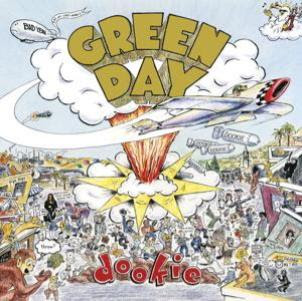I was inspired by a podcast called The 500 hosted by Los Angeles-based comedian Josh Adam Meyers. His goal, and mine, is to explore Rolling Stone Magazine's 2012 edition of The 500 Greatest Albums of All Time.
Album: #194
Album Title: Transformer
Artist: Lou Reed
Genre: Glam Rock, Pop Rock
Recorded: Trident Studios, London
Released: September, 1972
My age at release: 7
How familiar was I with it before this week: Somewhat
Is it on the 2020 list? Yes, at position #109, moving up 85 spots
Song I am putting on my Spotify Playlist: Andy's Chest
I am excited to introduce a new guest poster to The 500 Blog series – Jennifer Jones. I have been friends with Jennifer for more than 25 years, having met her through her husband Oscar. Not only was Oscar the goaltender on my tournament hockey team, he was also a talented musician and is still part of the live music scene here in the city of London, Ontario. There were many nights when my wife, Jen and I would be in the audience at a local watering hole (The Wick, The Brass Door, The Salt Lounge, Call The Office) while Oscar played bass. I always appreciated her perspective on music, as her tastes varied from mine.
Last November, Jennifer was posting photos of some of her favourite albums of all time. Among those posts was the cover to this week’s record, Transformer by Lou Reed. I dropped her a line and asked if she would be interested in sharing a few thoughts and, delightfully, she agreed. Here is her post.—-------------------------
As a really young teenager, the soundtrack of my life was monopolized by the Velvet Underground, and by Lou Reed in particular. It’s hard to explain my love for Lou: Despite his infamy, I can say that this love has been long-lived and has zero chance of dying. |
| Guitarist, singer and songwriter Lou Reed (Circa 1975) |
To me, Lou’s music is about stories: Stories that paint a picture of the people he surrounded himself with (or who happened to surround him) and the kinds of things that irked or inspired them. These stories are so raw and colourful and real, I’ve always felt a little transported back to Andy Warhol’s Factory and the dirty streets of New York. (Holly, good for you, girl - I would have gone too!) I feel like Lou did with his music what Andy did with his art, which was to create these stark, unapologetic snapshots capturing – even elevating - the culture around them and reflecting this back to those living it - and to anyone paying attention. |
American visual artist Andy Warhol (left) and Reed in the 70s.
Warhol's studio in New York was called "The Factory" and
was a famous hang-out for artists, musicians and celebrities. |
I was later to the Transformer party, for sure, but since I first heard it, it’s always been my favourite: It is simply impossible to get sick of this album. Like my love for Lou, I find it hard to explain, but I suspect it’s because it is textured with a little of everything, from the catty, campy, burlesque (New York Telephone Conversation, Good Night Ladies), to the sweet, melodious, slightly tragic (Perfect Day and Satellite of Love) and of course the ultimate story-scape anthem that is Walk on the Wild Side. |
Album cover for the single, Walk On The Wild Side. An
iconic song and Reed's best known, Rolling Stone ranked
it #223 on The 500 Greatest Songs of All Time. |
Although some of the songs were written or recorded earlier than Transformer, every single one belongs here - and has to be here - to make up this magnificent whole. Even in the midst of some of Lou’s most celebrated work, Andy’s Chest is still one of my all-time favourite Lou songs, less for the honour it gives Warhol (wonderful in itself) but more for the magical intimacy of its tiny, nonsensical, surely drug-fueled, vignettes. For me, this song has always been a kind of demented lullaby - maybe it’s all that swooping and rocking. |
| Marilyn Diptych - one of Warhol's best know art pieces. |
While Transformer does feel a little gentler in some ways than what I think of as typical Lou (because of David Bowie’s involvement and influence?), Lou’s trademark “snark” is definitely felt all the way through. The connection between Lou and Bowie is interesting: I always saw Lou as much grittier and rougher around the edges, but maybe paired with Bowie’s grace and elegance, the match was all the better. |
Friends and musical collaborators, Bowie (left) and Reed (right) take a humorous photo with Iggy Pop. Collectively, with 14 records on The 500 list (as musicians). |
I like to think about the album title and all that it evokes: Lou transforming himself, becoming “someone else, someone good”, moving in a different, separate direction (I’m So Free, Hangin’ Round), and the evolution/ transformation/becoming that occurs in some of the songs (Make Up, Walk on the Wild Side).
There’s an addictively bold, infectious, prideful energy to all of Transformer’s stories that draws you back to listen again and again - and again! To me, overall, Transformer is disarmingly poetic, a little fantastical, and a little snide – just like Lou.
Guest Blogger - Jennifer Jones
.jpg)






.jpeg)






.jpg)




















